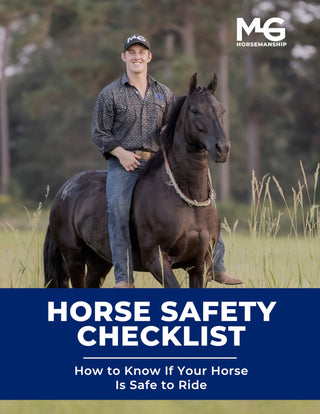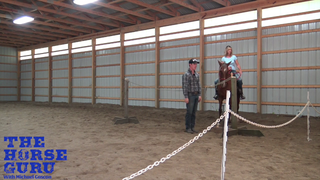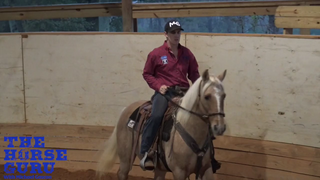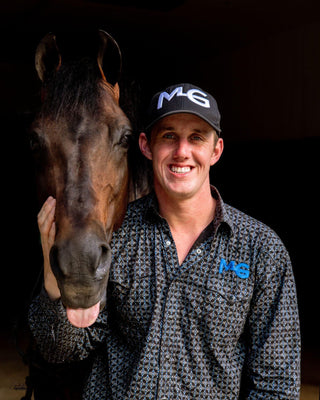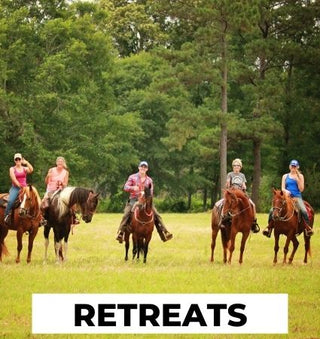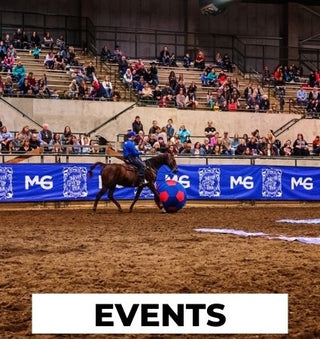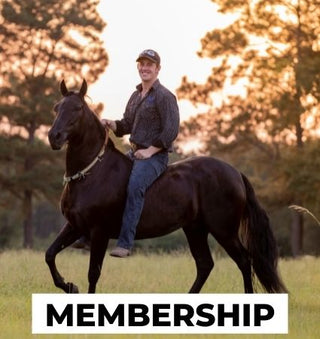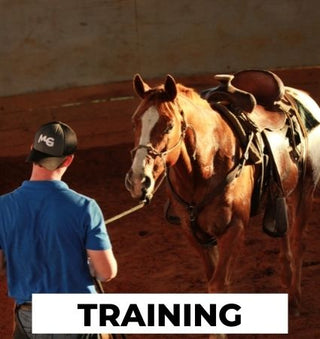Watch the Video Here or continue reading below!
Rollbacks are a powerful technique every horse owner and trainer should have in their toolbox. Whether you're working with a young colt, a problem horse, or a more advanced mount, rollbacks are an essential skill for improving control, responsiveness, and safety.
In this guide, we'll break down the purpose of rollbacks, how to execute them effectively, and why they’re a game-changer in training problem horses.
What Are Rollbacks?
A rollback is a movement where a horse stops, pivots, and changes direction, typically along a fence or rail. For more finished horses, rollbacks improve balance and agility, helping them sit on their hindquarters and cross over with their front end.
For problem horses—such as those that rear, buck, or surge—rollbacks become a way to interrupt negative behavior, engage the horse’s mind, and regain control.
Why Use Rollbacks?
Addressing Problem Behaviors
Many problem behaviors, like bucking, rearing, and bolting, occur when the horse operates in a straight line. Rollbacks disrupt this pattern, forcing the horse to stop and think instead of reacting impulsively. This shift takes the horse from the reactive side of their brain to the thinking side.
Building Control and Confidence
Rollbacks help you assess how much control you have over your horse. If your horse resists giving their face or disengaging their hindquarters, it’s a clear signal they’re not ready for faster speeds or more advanced tasks outside the round pen.
How to Perform a Rollback
Before attempting rollbacks at higher speeds, ensure your horse is soft and responsive at a standstill. Here’s a step-by-step guide:
Step 1: Test Flexibility at a Standstill
- Flex the Face: Slide your hand down the rein and ask your horse to bend their neck softly toward you. Ensure they yield without resistance.
- Move the Hindquarters: Ask your horse to cross their hind legs over by applying pressure and guiding their face.
Step 2: Progress to Movement
Once your horse is soft at a standstill, you can begin practicing rollbacks at different gaits.
- At the Walk or Trot: Slide your outside hand down the rein, look over your shoulder, and ask the horse to disengage their hindquarters. Keep them moving smoothly through the rollback.
- At the Canter: Ensure your horse maintains forward momentum while responding to your cues. A horse that resists is signaling a lack of control, meaning more groundwork may be needed.
Rollbacks vs. One-Rein Stops
While similar, rollbacks and one-rein stops serve different purposes. A one-rein stop is used to halt a horse completely, often when safety is the priority. However, frequent use of one-rein stops can make some horses associate misbehavior with stopping entirely, leading to laziness.
Rollbacks, on the other hand, allow you to redirect energy while keeping the horse moving forward. This prevents the horse from shutting down completely and encourages them to remain responsive.
Real-World Application: Transforming a Problem Horse
In one case, we worked with a horse prone to bucking and reactive behavior. Through consistent rollback practice, we transitioned her from a reactive, unsafe mount to a soft, responsive partner.
Rollbacks allowed us to interrupt her bucking, redirect her energy, and keep her moving forward. Over time, she became more confident, responsive, and willing to work.
Advanced Rollbacks: The Western Cutting Style
While the rollbacks we’ve discussed are foundational, more advanced rollbacks—like those seen in Western disciplines—require months of preparation. These movements involve the horse sitting deeply on their hindquarters, taking a step or two back, and pivoting with precision.
For beginners, focus on mastering the basics first. Even early-stage rollbacks can make a significant difference in your horse’s behavior and training.
Final Thoughts
Rollbacks are a versatile and effective tool for improving your horse’s responsiveness and handling problem behaviors. By practicing rollbacks consistently, you can build trust, control, and confidence with your horse, setting the stage for a more enjoyable riding experience.
So, whether you’re starting a young colt or retraining a challenging horse, rollbacks can help you take control and transform your riding journey.
Want more tips on training problem horses? Join our Free Horse Help Challenge and start enjoying your horse today!



